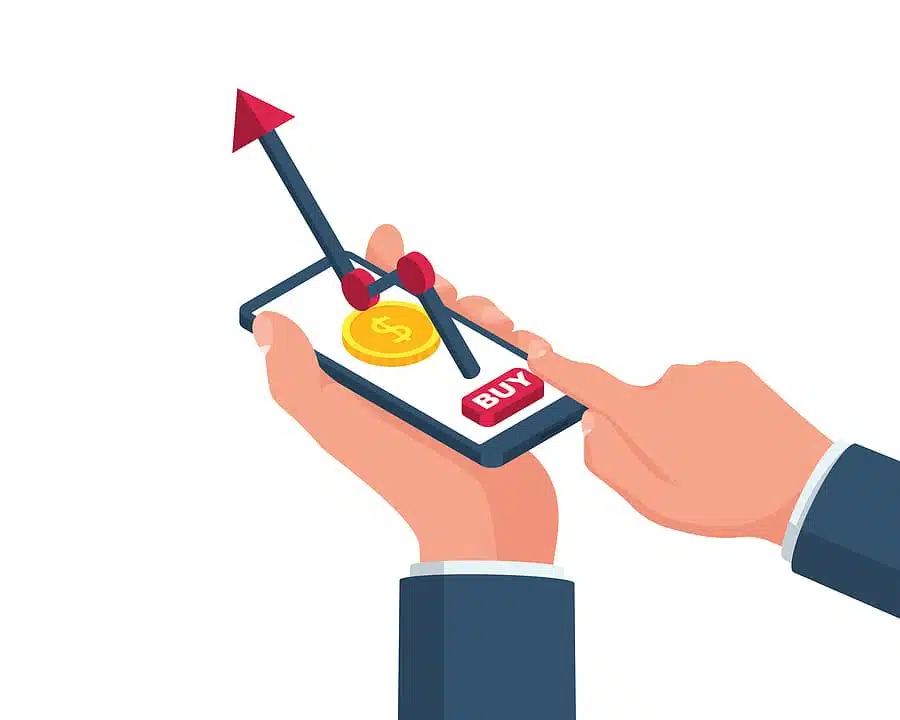Table of Contents
When advanced traders grasp how the markets operate, they turn to the world of quantitative models and predictive analytics. These help with the “heavy-lifting” part of the job. The Algorithmic vs. Quantitative trading debate becomes extremely relevant to traders at this point.
With the help of trading software development and these two methodologies, traders can make the most out of their strategies. The problem is that many traders do not understand the fundamental differences between quant vs. algo trading. Both approaches help traders automate their order placements, but they employ fundamentally different models to get there.
Algorithmic Trading: The Typical Workflow
If you are looking for a textbook definition of algorithmic trading and how it matches the AI trading model, we recommend you check out this article.
In a nutshell, algorithmic trading is all about programming a specific set of if/then rules to help traders execute their positions automatically down the line. This approach relies on past market data and price trends to predict future trading opportunities. Essentially, programmers “feed” their trading algorithms with the past trading data to predict future transactions. Such algorithms rely on chart analytics over time to make automated trading decisions.
The trading algorithm development process can look like this:
- Algorithmic trading developers compile a set of if/then rules based on the previous market data and feed it into their algorithmic trading application.
- The software solution is then tested in a simulated environment to see if it predicts the actual market movements precisely.
- The trading developers will adjust the algorithms to ensure better predictive accuracy in several rounds based on the test data.
- They deploy the algorithm into the live environment, where it is used to execute trades.
Algorithmic trading provides an exciting opportunity for more tech-savvy traders to automate their workflows entirely using predictive analytics. The best part is that nowadays, any trader can create a personal trading algorithm. Now that we understand the basics of algorithmic trading let’s see how it differs from the quantitative trading model.
What is Quantitative Trading? (In Simple Terms)
Quantitative trading refers to all the trading strategies that solely employ statistics, mathematical models, and large datasets of previous trading data to determine the future outcomes of the market transactions. The transactions in quant trading models are executed automatically and are based on nothing else but statistical evidence.
Simplified, any quantitative trading model will take into the account each of the following three factors at any point in time:
- Price of the stock
- The volume of the stock traded
- Other factors determined by the determined mathematical model
Quant traders use the power of statistics, probability, and programming to determine the best trading opportunities. The major premise of any quantitative trading model is:
“if it happened before – it is likely to happen again with a high degree of statistical probability.”
Quantitative trading models rely solely on predetermined statistical models to guide future purchasing processes.
How Does Quantitative Trading Work?
Quantitative trading is the model based on rational thinking and statistical data analysis pooled from large data sets. This mathematical precision is exactly what’s been driving its popularity as one of the leading trading methods in the industry.
While we are not going to go too much into the technicalities of the mathematical model creation, here’s a quick overview of the quantitative trading modeling process:
- A quant developer will use a statistical tool (like Stata or MatLab) to download datasets of the past market data
- They will analyze the dataset and try to determine the statistically significant variables to build their model.
- With the help of math, trial and error, regression testing, and other econometric tricks, they will determine all the variables, outliers, and other significant variables, finalizing the model.
- Once the quantitative trading model is built, quant traders would first “mirror” it against the real-world data to see if it works before deploying it.
Good quant developers rely solely on variables with high statistical significance. They tend to trade in large volumes, which is why large financial institutions have developed quantitative trading models historically. But in the modern landscape, quantitative trading has gained momentum in the private investment sector as well, thanks to the advent of online trading.
A good example of a quantitative model would be weather forecasting – meteorologists rely on historical weather data and information about the different seismological factors to determine future weather conditions daily.
Algorithmic vs. Quantitative Trading: Key Differences, Pros & Cons
Both algorithmic and quantitative trading models rely on past data to determine future potential outcomes in the market. However, there are a few fundamental differences between the two methods:
- Algorithmic trading uses big data and consistent trend analysis to guide decision-making, while the quantitative trading model relies more on mathematics and technical analysis.
- Algorithmic trading focuses solely on historical stock data. On the contrary, quantitative models are more technical and complex – they employ multiple datasets at a time. For instance, if employment levels are considered when building a quant model, a separate dataset with historical unemployment levels would be included too.
- Computers execute trading orders automatically in algorithmic models, while quantitative trading models are more often used as a “guiding hand,” with the transaction remaining manual.
To sum it up – quantitative trading is a highly-technical and manualized model that guides the decision-making process of professional traders. In contrast, algorithmic trading is used to automate entire trading workflows more often. The main benefit of the algorithmic trading models is that they are beginner-friendly and help traders make educated decisions. On the contrary, quantitative models rely on carefully catered out statistical data to guide experts.
Quant Developers: Who Are They and What They Do?
Almost anyone can get started with algorithmic trading, thanks to automated online trading platforms like eToro. But not everyone can become a quantitative trading model developer without proper knowledge. In financial software custom development, it is often hard to stand out from the crowd. With that being said, a few skills make a good quantitative model developer. If you want to become an aspiring quant programmer, you will need to master a rigorous set of skills:
- Advanced knowledge of econometrics
- Familiarity with financial modeling software
- Good financial knowledge and familiarity with target markets
- Understanding of core data structures
- Coding languages: C++, Python, R, Java
To sum it up, being a quantitative model developer is not a piece of cake – that’s the primary reason people who qualify for such positions make well over six figures in the USA.
Looking for a Reliable Trading Model Development Partner?
Getting started in the world of investment has never been easier, thanks to the advent of online trading. But if you landed on this article, the chances are – you want to spice things up and create an entire trading model that will serve you well into the future. Scopic has over 16 years of experience developing many financial solutions, including trading modeling applications. We offer competitive rates and free consultations. So, don’t hesitate to contact us today – till the next time!
LLM Fine-Tuning Whitepaper
Implement Smarter LLMs Without Breaking the Bank: A Practical Guide to Fine-Tuning and LoRA







